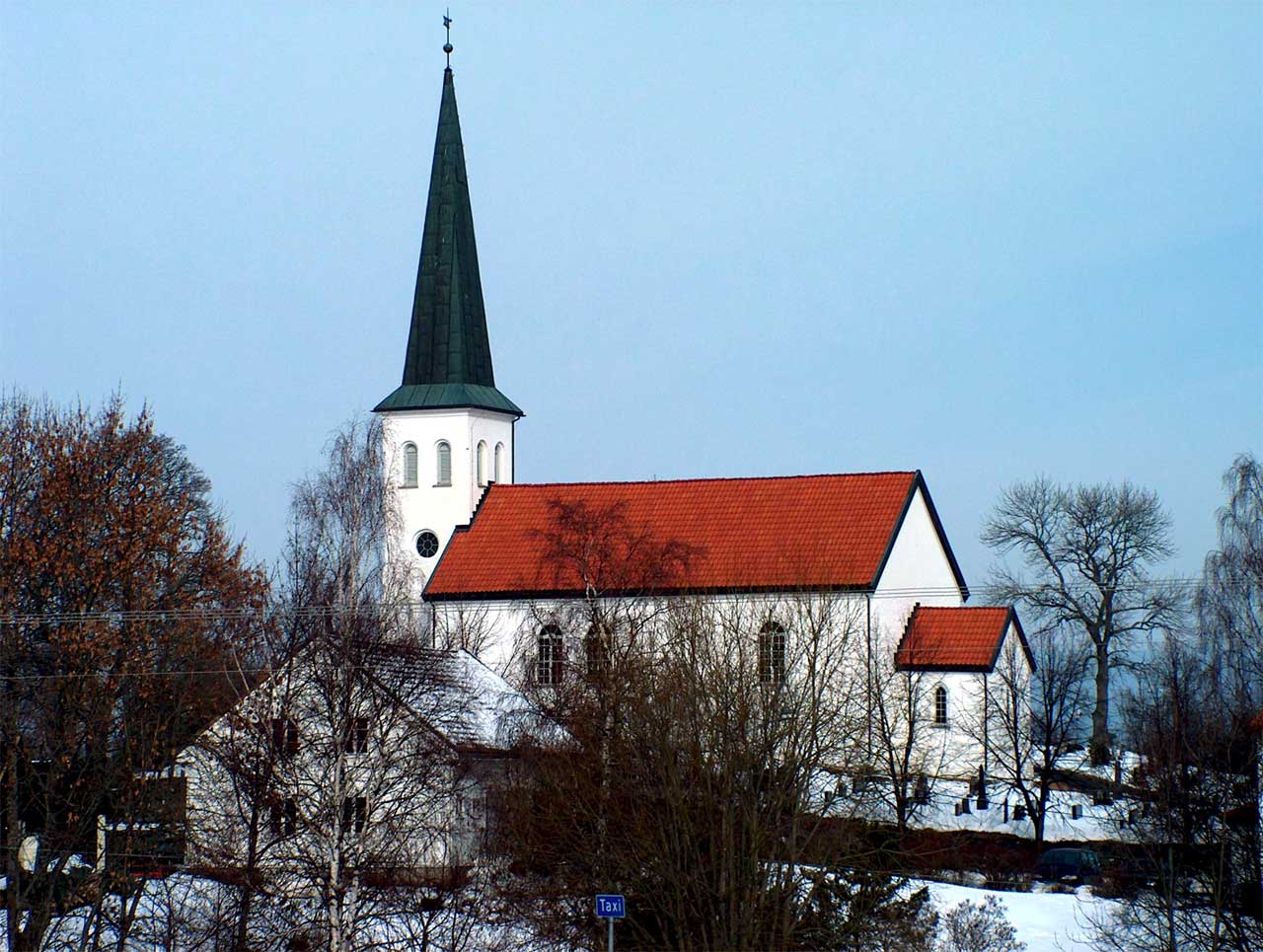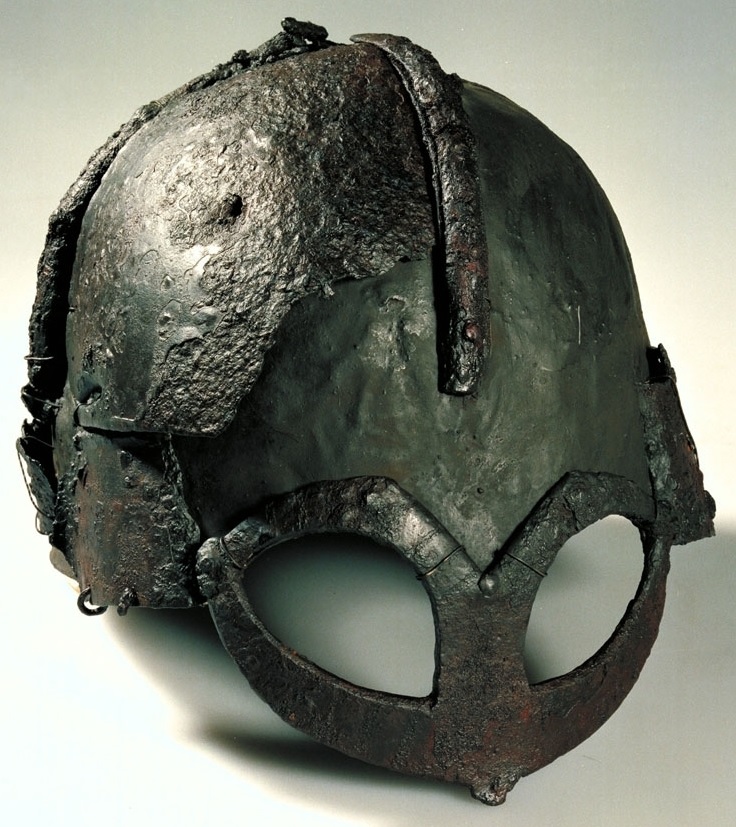Haugsbygd on:
[Wikipedia]
[Google]
[Amazon]
 Haugsbygd (formerly known as ''Vangsbygd'' and ''Vangsfjerdingen'') is a village in Ringerike municipality, northeast of the center of Hønefoss, in Buskerud,
Haugsbygd (formerly known as ''Vangsbygd'' and ''Vangsfjerdingen'') is a village in Ringerike municipality, northeast of the center of Hønefoss, in Buskerud,
 The village must have been of significance in the past. The ''Sætrang'' and ''Gjermundbu'' discoveries are proof of this.
The Sætrang discovery (''Sætrangfunnet'') was a rich grave finds from a burial mound dating to ca. 975 AD. The tomb was a double grave that was discovered in 1834 on the Sætrang farm Haugsbygd. The burial mound was about 20 meters in diameter and about 1.2 meters high. In the middle of the mound was found a double tomb. Contents included 63.89 grams of gold in the form of five gold rings and about 900 beads of amber, glass and glass mosaics, and a silver bead.
The Gjermundbu mound burial (''Gjermundbufunnene'') was unearthed during 1943 and contained many artifacts, most of those being weaponry or horse harnesses. A
The village must have been of significance in the past. The ''Sætrang'' and ''Gjermundbu'' discoveries are proof of this.
The Sætrang discovery (''Sætrangfunnet'') was a rich grave finds from a burial mound dating to ca. 975 AD. The tomb was a double grave that was discovered in 1834 on the Sætrang farm Haugsbygd. The burial mound was about 20 meters in diameter and about 1.2 meters high. In the middle of the mound was found a double tomb. Contents included 63.89 grams of gold in the form of five gold rings and about 900 beads of amber, glass and glass mosaics, and a silver bead.
The Gjermundbu mound burial (''Gjermundbufunnene'') was unearthed during 1943 and contained many artifacts, most of those being weaponry or horse harnesses. A
University of Oslo. Kulturhistorisk museumViking Helmet from Gjermundbu
{{authority control Villages in Buskerud
 Haugsbygd (formerly known as ''Vangsbygd'' and ''Vangsfjerdingen'') is a village in Ringerike municipality, northeast of the center of Hønefoss, in Buskerud,
Haugsbygd (formerly known as ''Vangsbygd'' and ''Vangsfjerdingen'') is a village in Ringerike municipality, northeast of the center of Hønefoss, in Buskerud, Norway
Norway, officially the Kingdom of Norway, is a Nordic countries, Nordic country in Northern Europe, the mainland territory of which comprises the western and northernmost portion of the Scandinavian Peninsula. The remote Arctic island of ...
.
Location
The village is known for its billowing landscape and is located at a relatively high elevation. Its area can be said to stretch from the border on Norderhov in the south to Knestang and ''Bølgentoppen'' at the border on Åsbygda in the north. Administratively, the area was part of Norderhov municipality before the great unification of the municipalities on 1 January 1964, but it currently belongs to the large municipality of Ringerike. The center of the city is often known as Haug from theOld Norse
Old Norse, Old Nordic, or Old Scandinavian, is a stage of development of North Germanic dialects before their final divergence into separate Nordic languages. Old Norse was spoken by inhabitants of Scandinavia and their overseas settlement ...
word ''haugr'' meaning mound. Haug church, which is the main church of Haug parish, Vang primary school, and Haugsbygd lower secondary school, are located here. Previously, there was both a bank and a post office there, but after the bank and postal services started their rationalizations, these were merged.
Currently Haugsbygd mainly consist of agricultural estates and modern residential areas of detached houses. In recent years the area has been one of the most desirable building areas of Ringerike municipality, which repeatedly has opened new developments in Haugsbygd. There are roads leading to Haug over county road 163 Hønefoss to Klekken, either over Fløytingen north of Sætrang, or Øvre Klekkenvei south of Klekken Hotell. It is also possible to get to Haug over Riksvei 35 in direction of Jevnaker, over Viulveien from Hvalsmoen and Hvalsveien. One can also get there from Jevnaker or Norderhov over Riksvei over Åsbygda and Klekken, over Harehaugveien from Smeden south of Bølgen.
Excavations
 The village must have been of significance in the past. The ''Sætrang'' and ''Gjermundbu'' discoveries are proof of this.
The Sætrang discovery (''Sætrangfunnet'') was a rich grave finds from a burial mound dating to ca. 975 AD. The tomb was a double grave that was discovered in 1834 on the Sætrang farm Haugsbygd. The burial mound was about 20 meters in diameter and about 1.2 meters high. In the middle of the mound was found a double tomb. Contents included 63.89 grams of gold in the form of five gold rings and about 900 beads of amber, glass and glass mosaics, and a silver bead.
The Gjermundbu mound burial (''Gjermundbufunnene'') was unearthed during 1943 and contained many artifacts, most of those being weaponry or horse harnesses. A
The village must have been of significance in the past. The ''Sætrang'' and ''Gjermundbu'' discoveries are proof of this.
The Sætrang discovery (''Sætrangfunnet'') was a rich grave finds from a burial mound dating to ca. 975 AD. The tomb was a double grave that was discovered in 1834 on the Sætrang farm Haugsbygd. The burial mound was about 20 meters in diameter and about 1.2 meters high. In the middle of the mound was found a double tomb. Contents included 63.89 grams of gold in the form of five gold rings and about 900 beads of amber, glass and glass mosaics, and a silver bead.
The Gjermundbu mound burial (''Gjermundbufunnene'') was unearthed during 1943 and contained many artifacts, most of those being weaponry or horse harnesses. A Viking Era
The Viking Age () was the period during the Middle Ages when Norsemen known as Vikings undertook large-scale raiding, colonizing, conquest, and trading throughout Europe and reached North America. It followed the Migration Period and the ...
helmet with aventail and a single fragmented, but possibly complete mail shirt have been excavated at the Gjermundbu farm. This helmet was made of iron and was in the shape of a rounded or peaked cap made from four plates after the spangenhelm pattern. The helmet has a rounded cap and has a "spectacle" guard around the eyes and nose that formed a sort of mask. , it is the only known example of a complete Viking helmet in existence.
See also
Viking Age arms and armour
Knowledge about military technology of the Viking Age (late 8th to mid-11th century Europe) is based on relatively sparse archaeological finds, pictorial representation, and to some extent on the accounts in the Norse sagas and laws recorded in t ...
References
External links
University of Oslo. Kulturhistorisk museum
{{authority control Villages in Buskerud